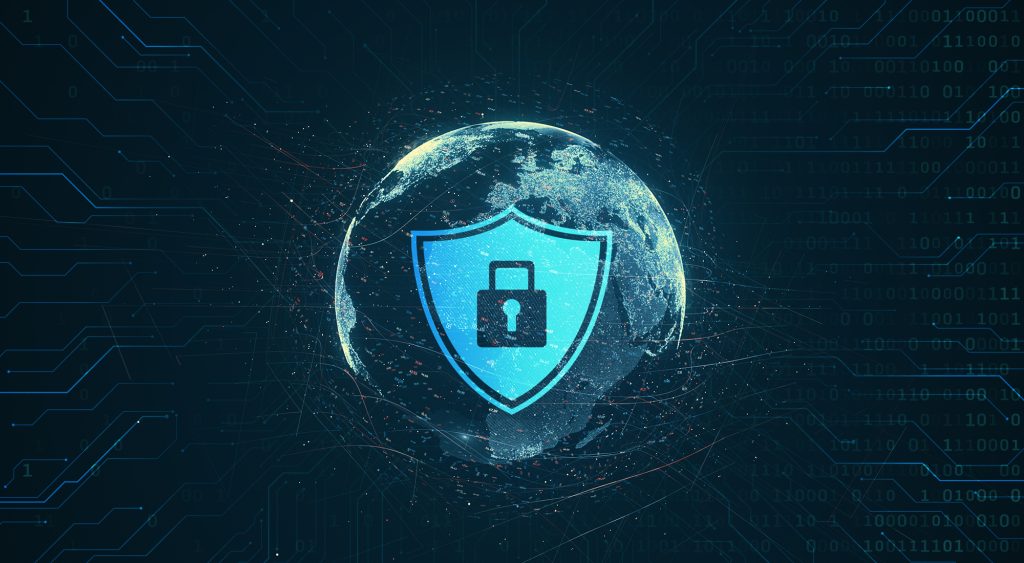
Welcome to the world of vulnerability management! Whether you’re a business owner or an IT enthusiast, understanding how to protect your digital assets is crucial. In today’s fast-paced tech environment, cybersecurity can feel like a daunting task, but fear not! We’re here to guide you through the essentials of effective patching to safeguard your systems. Think of patch management as maintaining a sturdy roof on your digital house—it’s essential to keep those pesky cyber-rainy days at bay. With best practices and useful tips, you’ll be well-equipped to fend off threats and keep your systems running smoothly.
Understanding Vulnerability Management
In today’s fast-paced digital landscape, keeping your organization’s data secure is more crucial than ever. Vulnerability management is at the heart of this effort, ensuring that your systems don’t fall victim to potential threats. So, let’s dive deeper into what it entails.
Definition and Importance
Vulnerability management is the ongoing process of identifying, classifying, remediating, and mitigating security weaknesses. Its importance cannot be overstated, as it acts as a protective barrier against cyber threats. With new vulnerabilities emerging almost daily, having a solid approach to managing these risks is essential for minimizing potential damage. By proactively addressing vulnerabilities, organizations can safeguard their data, maintain customer trust, and ensure compliance with industry regulations.
Common Vulnerabilities and Threats
When it comes to vulnerabilities, there’s no one-size-fits-all. They come in various forms, and understanding these can be the first step towards fortifying your defenses. Some common vulnerabilities include:
Unpatched Software: This is perhaps the most frequent issue, where software that lacks the necessary updates becomes a prime target for cybercriminals.
Weak Passwords: Despite being one of the simplest defenses, weak passwords are still widespread, making systems an easy target for intrusion.
Misconfigurations: Poorly configured systems can create gaps that attackers can exploit, such as default settings left unchanged.
Outdated Security Controls: Without regular updates, security tools might not recognize or block new threats effectively.
Recognizing these vulnerabilities helps in understanding the type of threats they pose. Cyber threats can range from malware and ransomware attacks to phishing schemes, all of which are designed to exploit system weaknesses.
Role of Patch Management in Cybersecurity
Patch management plays a pivotal role in cybersecurity as it involves the timely application of updates to software and systems. Think of patches as the digital Band-Aids for vulnerabilities that developers identify over time. When these updates are applied regularly and efficiently, they can:
Strengthen defenses by addressing identified vulnerabilities.
Improve system performance by fixing bugs or glitches.
Ensure compliance with regulatory standards.
Effective patch management reduces the window of opportunity for hackers to exploit vulnerabilities. By keeping software up-to-date, organizations create a more robust barrier against cybercriminals.
Establishing a Vulnerability Management Program
Creating an effective vulnerability management program is like building a fortress around your data assets. It involves a strategic series of steps designed to protect and respond to potential threats.
Conducting Regular Vulnerability Assessments
The foundation of any strong vulnerability management program is regular assessments. These assessments involve:
Scanning Networks: Routine scans help identify weaknesses across all devices connected to the network.
Evaluating Systems: Verifying whether existing security measures are functioning as expected and identifying areas of improvement.
Testing for Compliance: Checking that the organization meets industry security standards and regulations.
Regular assessments allow an organization to stay informed about the security landscape and address vulnerabilities before they can be exploited.
Setting Priorities Based on Risk Analysis
Once vulnerabilities are identified, the next step is determining which ones to tackle first. This is where risk analysis comes in. Organizations should prioritize based on factors like:
Severity of the Vulnerability: High-severity vulnerabilities that could lead to significant data breaches should be addressed immediately.
Likelihood of Exploitation: Vulnerabilities that are more likely to be targeted should be prioritized.
Impact on Business Operations: Consideration of how fixing the vulnerability affects business functions.
Setting priorities enables an organization to allocate resources efficiently and effectively mitigate risks.
Creating a Patch Management Schedule
The patch management schedule is the blueprint for applying necessary updates in a structured manner. Here are the steps to creating one:
Develop a Policy: Document the process for testing and deploying patches, ensuring it aligns with organizational goals.
Assign Responsibilities: Determine who will manage patches, usually a dedicated IT security team or an external partner.
Establish Timelines: Set deadlines for patch testing and deployment, prioritizing critical patches first.
By following a well-structured schedule, organizations can ensure that they are not only addressing current vulnerabilities but also preparing for future threats. This consistency protects the organization’s infrastructure and minimizes downtime.
In conclusion, vulnerability management is not just a protective measure—it’s an ongoing commitment to security. By understanding common threats and establishing a robust vulnerability management program, organizations can stay one step ahead of cybercriminals and protect their most valuable assets.
Best Practices for Effective Patching
When it comes to vulnerability management, effective patching is a core ingredient. But what’s the secret sauce to doing it right? Let’s dive into some best practices that can help you keep those cyber threats at bay!
Automating the Patch Management Process
Why let manual processes bog you down when automation can streamline patch management for you? Automating the patch management process not only saves time but also reduces human error. Here’s how you can make automation work for you:
Use Patch Management Tools: Invest in reliable automated tools that handle the downloading, testing, and deployment of patches. These tools can regularly scan your systems, identify vulnerabilities, and apply necessary patches timely.
Schedule Regular Updates: Set a consistent schedule for applying patches. Automation helps in sticking to this schedule, ensuring that critical vulnerabilities are addressed promptly.
Automation frees up your IT team’s time, allowing them to focus on strategic initiatives rather than mundane updates. Plus, it provides peace of mind knowing your systems are consistently up to date.
Testing Patches Before Deployment
While it may be tempting to apply patches immediately, it’s crucial to test them first. Testing helps you avoid potential disruptions and ensure compatibility with existing systems. Here’s a step-by-step approach:
1. Create a Test Environment: Set up a testing environment that mirrors your production systems. This allows you to see how patches will behave in real-world scenarios without risking your live environment.
2. Conduct Regression Testing: Verify that the patch doesn’t interfere with existing functionalities. Look for any software conflicts or slowdowns during testing.
3. Review Patch Documentation: Patch notes often contain vital information about potential issues. Understanding these can help you anticipate and mitigate any complications.
Testing might take a bit more time, but it greatly reduces the risk of unforeseen problems once the patch is live.
Collaboration Across Departments
Effective patch management isn’t solely an IT concern—it requires collaboration across the board. Here’s why synergy between departments is vital:
Cross-Departmental Communication: Facilitate open channels of communication between IT, security, operations, and management. This ensures everyone is on the same page regarding vulnerabilities and priorities.
Develop a Unified Strategy: Work together to develop a holistic approach to vulnerability management, aligning patching with broader company goals and risk management strategies.
Feedback Loops: Encourage departments to provide feedback on how patches affect their operations. This can help refine processes and improve the overall patching strategy.
By creating a culture of collaboration, you can enhance the effectiveness and efficiency of your patch management efforts.
Challenges and Solutions

While patching is essential, it comes with its own set of challenges. Let’s explore some common hurdles and how to overcome them.
Overcoming Resource Limitations
Not every organization has a surplus of IT resources to dedicate to patch management. But don’t worry, you can still stay secure:
Prioritize Patches: Focus on the most critical vulnerabilities first. Using a risk-based approach ensures that resources are directed where they’re needed most.
Utilize Third-Party Services: Consider outsourcing to managed service providers for patch management. They bring expertise and resources that you might lack internally.
Leverage Automation: As mentioned earlier, automation can significantly reduce the workload on your team.
By being strategic and resourceful, you can maintain a robust patch management process even with limited resources.
Managing Legacy Systems
Legacy systems can be a patching nightmare, but with a thoughtful approach, you can keep them secure:
Assess Vulnerabilities: Regularly evaluate the risk associated with legacy systems. Understand their weaknesses and the potential impact of an attack.
Implement Compensating Controls: If patches aren’t available, employ alternative measures like firewalls, intrusion detection systems, and network segmentation.
Plan for Modernization: While preserving legacy systems might be necessary short-term, plan for long-term migration to more secure, supported platforms.
Dealing with legacy systems is challenging, but with careful planning, you can protect your organization from potential threats.
Ensuring Compliance with Industry Standards
Compliance isn’t just about staying within legal bounds—it enhances overall security. Here’s how to ensure compliance:
Regular Audits: Conduct periodic audits to assess your compliance with relevant standards and regulations. This helps identify gaps and areas for improvement.
Keep Documentation Updated: Maintain thorough records of all patch management activities, including patch histories, testing results, and change logs.
Engage with Industry Updates: Stay informed about changes in regulations and industry standards to ensure that your processes remain current.
Being proactive about compliance not only helps avoid penalties but also fortifies your cybersecurity posture.
In conclusion, effective vulnerability management and patching require a comprehensive approach that incorporates automation, testing, collaboration, and overcoming resource constraints. By addressing these challenges with innovative solutions, you can strengthen your cybersecurity defenses and keep your systems secure.
Conclusion
In the world of cybersecurity, managing vulnerabilities through effective patching is non-negotiable. By following best practices like prioritizing threats, automating patches when possible, and keeping detailed records, organizations can protect themselves against potential cyber threats. Remember, it’s not just about patching frequently, but doing so wisely. Stay proactive, keep communication lines open with your team, and continuously educate yourself on new vulnerabilities. This way, you’ll be better equipped to handle new challenges and ensure robust security for your systems.







